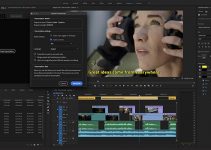Among the best ways to get inspiration or learn something of your own is to study the masters. Watching films and reading about process is a good start and it can show you new ways of doing things. It can also give you an idea on how to apply advanced cinematography techniques to your next project.
From Sareesh Sudhakaran, who runs wolfcrow, is a video about seven amazing tips from great cinematographers. This channel has done a lot for educating people about cinematography and seeing yet another video is sure to help. Also, it is nice to see a video about film that isn’t super focused on the latest gear. Many of the best films were shot on cameras way worse than what we have now.
1. Master Exposure
Gordon Willis, known for The Godfather series, Annie Hall, Manhattan, All the President’s Men, and plenty more of classics, is the inspiration for mastering exposure. This requires a complete understanding of your film or sensor’s dynamic range and then applying that knowledge to capture the best image possible.
One of the best stories about him is how his exposures were so particular that the lab could not apply any changes to the film lest they ruin the shots. It was also a way of protecting the film from being changed later on in the process outside of Willis’ control.
Learning information about your camera and then carefully constructing the scene to fill that dynamic range is very important for indie filmmakers.
The closer you can get the original take to your final idea the easier and better the film will look in the end. It will take more time to do and potentially mean a larger budget, but don’t make the opposite mistake of thinking you are better than that and end up with mistakes anyway.
2. Use Natural Light to your Advantage
Natural light can be an incredible asset for film. Nestor Alemendros understood that, and it caused a brilliant pairing when he teamed up with Terrence Malick for Days of Heaven.
By using natural light well by positioning the sun against the camera or just knowing when and where to shoot can help you create amazing shots all day long. Making the most of golden hour light is something you can very easily get started with. It all comes back to the point that you don’t need a bunch of expensive equipment to learn and craft lighting for film.
3. Learn to Light by Eye
If you want to master cinematography, like Sven Nykvist who famously worked with Ingmar Bergman and collected two Academy Awards, you’ll have to learn how to see light without resorting to pricey tools. Viewfinders and monitors today are amazing tools for the modern cinematographer, but many of the greats didn’t have these at their disposal.
Light meters can certainly help, but they still don’t give the whole picture. Practicing and experimenting with light and understanding how the light falls outside of the camera viewfinder will help you see the bigger picture and help you craft a better scene.
4. Always Experiment
Australian-Hong Kong cinematographer Christopher Doyle was known for trying new things with his cinematography. Experimenting can be lots of different things.
Dragging the shutter, slow motion, moving the camera in rhythm with sound or action, moving the camera arbitrarily, strobe lights, color filters, extreme wide-angle close-ups, etc. Without experimenting you’ll stop learning new things and while you might still produce great projects, learning and experimenting can help you step it up a notch. Rules are meant to be broken.
5. Use Color
Vittorio Storaro, who many might know from Apocalypse Now, The Last Emperor, and The Confirmist, is one of the most awarded cinematographers with three Academy Awards on his resumé. He was famous for his mastery of color.
Learning color theory and design, basically how colors play off each other and how different colors and cause different reactions in an audience is critical to cinematography.
This goes beyond just film, all art is impacted by this and you can learn about about color. Developing your own style, which can be using less color, is very important.
6. Use Paper Lanterns
Also known as Chinese lanterns, paper lanterns are incredibly affordable and effective tools every cinematographer should be aware of.
Robert Yeoman, a frequent collaborator of Wes Anderson, uses these well. Tossing them overhead with a pole or by hanging it up will fill the scene will an all-around light. It’s nice, cheap, and easy, so make sure you have this tool in your bag.
7. Start Learning Now!
Being here is already a good start, but you should know that it is never too late to start learning cinematography. The French New Wave was better for having Raoul Coutard to help push things forward and he got his start at 35 years old.
He started off in documentary photography and developed new techniques for faster setups, giving directors and actors more freedom.
Also, the techniques meant films could be shot often in real locations and on very limited budgets. Those skills are always useful for directors. You will always need practice and to learn theory, so keep it going.
Sudhakaran emphasizes that filmmaking is not just learning about CRI and other technical things. It is theoretical and art that requires time and patience to deeply understand and learn. If you don’t recognize some of the names on this list, watching some of their films is a good place to start.
[source: wolfcrow]
Disclaimer: As an Amazon Associate partner and participant in B&H and Adorama Affiliate programmes, we earn a small comission from each purchase made through the affiliate links listed above at no additional cost to you.



